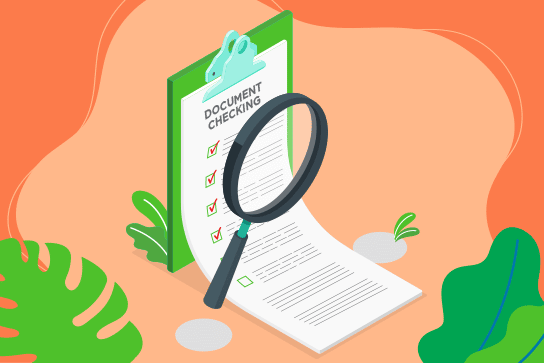Last Updated on July 30, 2025 by Ozlinks Education
If you have been working as a cook or commis chef but have not yet attained your qualification for any reason, you’ve come to the right place. The RPL (Recognition of Prior Learning) program provides a pathway for you to convert your skills and work experience into a formal Certificate III in Commercial Cookery, delivered by one of our Registered Training Organisation (RTO) partners.
Let’s get your skills certified!
Certificate III in Commercial Cookery Overview
The SIT30821 Certificate III in Commercial Cookery is specifically designed for individuals who aspire to build a career as cooks in the hospitality industry. This qualification equips learners with the fundamental skills and knowledge necessary to prepare, season, and cook food in a dining or catering establishment. The skills acquired through the course can provide you with a strong foundation in culinary techniques, food safety, and kitchen management, all of which are highly valued by employers.
To achieve this qualification, learners must demonstrate competency in a total of 25 units of competency that need to be completed:
- 20 core units
- 5 elective units
Job title: Cook
Certificate IV in Kitchen ManagementWhy do I need the Certificate III in Commercial Cookery?
You may need the Certificate III in Commercial Cookery to enhance your job opportunities, or this certification might be essential for migration skills assessment and visa application purposes. By obtaining this certification, you can navigate the job market more effectively and improve your chances of securing employment in Australia.
International students and migrants may require the Certificate III in Commercial Cookery as part of their migration skill assessment for visa 491, visa 494, and visa 482 applications. If you need skills assessment support, please contact us.
Ozlinks Education can help you to complete the RPL program, which allows you to convert your skills and work experience into a formal Certificate III in Commercial Cookery through the Recognition of Prior Learning (RPL) program offered by one of our registered training organisation partners. Our expert team will assess your individual circumstances and provide customized support to ensure you obtain the qualifications necessary to advance your career in Australia.
What does a cook do?
A cook prepares, seasons and cooks’ food in a dining or catering establishment.
Their job involves:
- Inspects and selects ingredients for cooking
- Measures, cleans, chops, blends, seasons, heats and cools food
- Monitors food cooking processes to ensure proper cooking and presentation
- Coordinates, supervises and collaborates with kitchen staff in food preparation and cooking
- Cleans and maintains kitchen equipment and utensils
- Monitors and maintains inventory of food supplies and equipment
- Assists in the development of new recipes and menu items

What is Recognition of Prior Learning?
The Australian Qualification Framework (AQF), governed by the Australian Government’s Department of Education in consultation with the states and territories, ensures that all students have the right to have their prior education, relevant work experience, and training acknowledged, facilitating their advancement towards and between qualifications. Each registered training organisation (RTO) has its policies and procedures for determining your Recognition of Prior Learning (RPL) eligibility, but the core principles remain consistent. The experience and skills you have gained through your work can assist you in completing a qualification more quickly and reducing the time commitment involved in taking a course to bring you closer to your dream job.
The advantages of using RPL program
Recognition of Prior Learning (RPL) program offer numerous benefits, including time and cost savings by validating existing skills and experience, expedited qualification achievement, and improved employment prospects. RPL program helps you:
- There is no need to relearn what you already know.
- It saves both your time and tuition fees.
- Assist you in achieving your career change objectives in Australia.
- You do not need to attend classes or redo the training you have already completed.
- Open new career opportunities in the building industry.
- Obtain this certificate to satisfy the skills assessment requirements.
Evidence requirements
Below is the general list of documents that you are required to provide to support your RPL assessment application:
- 100 points of identification documents (ID)
- A current resume outlines your relevant employment history
- Student USI number
- Employment evidence, including an employment reference letter, employment contract, payslips, income statement, and superannuation.
- Workplace photos and videos that showcase you performing your tasks in accordance with the job duties outlined above demonstrate your competency in the relevant qualification.
Note: Additional gap training may be necessary to address any areas for improvement and to ensure a positive assessment outcome. An RTO assessor might conduct a competency interview with you to identify any existing training gaps.
Skills Assessment SupportThe RPL process is done in 3 simple steps.
The RPL process consists of three stages and typically takes between six and eight weeks to complete from the time an applicant applies to an RPL assessment institute. During this period, applicants gather evidence of their skills and experiences, which is then evaluated against the relevant qualifications. This thorough process ensures that the recognition of prior learning accurately reflects the applicant's capabilities and knowledge.
Register / Enrolment
Step 1: During the enrolment stage, you will have to demonstrate your skill level in relation to your chosen qualification by completing a self-assessment related to the required skills and knowledge to determine the relevance of the RPL pathway.
Assessment/ Evidence Review
Step 2: The RPL assessor will give you tests in the subjects of your applied qualification to find out what skills you have and match them to the skills needed to work in the industry and for the qualification you have chosen.
You will need to provide proof of the necessary documents, photos, and videos to show that you know how each subject in your qualification.
Result
Step 3: If you meet all units of competency under the qualification, you will be issued with a Certificate and Statement of Results.
What qualification are you looking for?
To enhance your chances of securing a well-paying job in the Australian market, consider evaluating your skills and work experience, along with obtaining formal recognition of your qualifications. If you are a skilled baker, chef, cook, or restaurant manager, you may apply for the Recognition of Prior Learning (RPL). Select the qualification that best aligns with your needs and circumstances from the list provided below.
Trade and Construction Qualifications
Frequently Asked Questions
Below is a list of frequently asked questions from our customers. If you need any further information, please do not hesitate to contact Ozlinks Education via the contact form.
What is the Recognition of Prior Learning (RPL) program?
Recognition of Prior Learning (RPL) allows higher education institutions to formally recognise the knowledge, skills, and experience you already have, even if they were gained outside traditional education.
Why should you consider RPL program?
The RPL program is generally a faster method of obtaining an Australian Certificate III or IV qualification compared to completing a formal training course, as it recognizes your prior work experience and overseas qualifications.
Yes. The RPL evaluation process is just as thorough as any other evaluation. But the evidence you need to show may be different from what is usually asked in a class assessment.
When the criteria for each of the subjects are met, a degree may be partially or fully accredited. For example, only completed subjects can be counted towards the qualification.
Even if your credits aren't enough to qualify, you can still receive written certification of the courses you've completed.
This will depend on the complexity of your qualification, how many subjects you apply for and how long it takes you to gather proof of work experience, collate and submit proof. Usually, the RPL process is 6 to 8 weeks from the date of application to the RPL assessment institute and also depends on your industry and qualifications.



